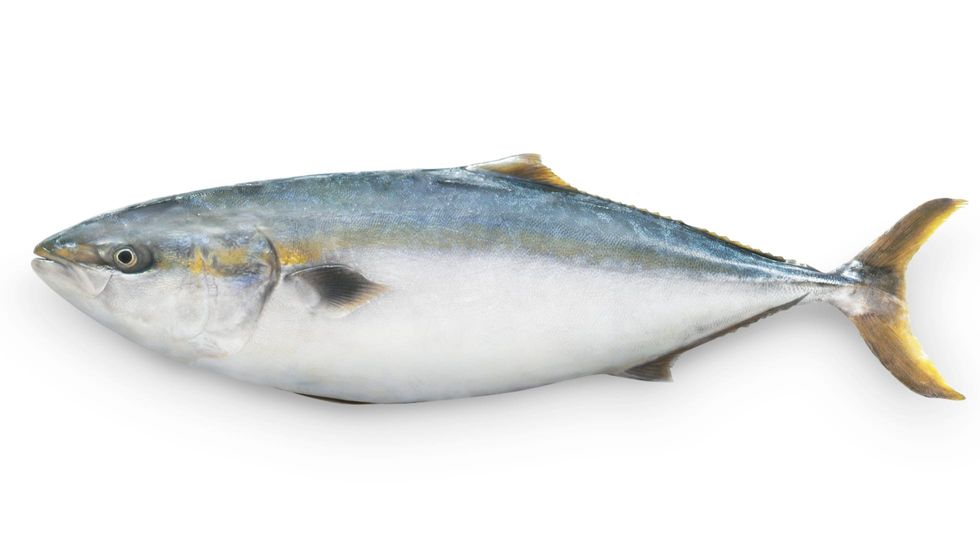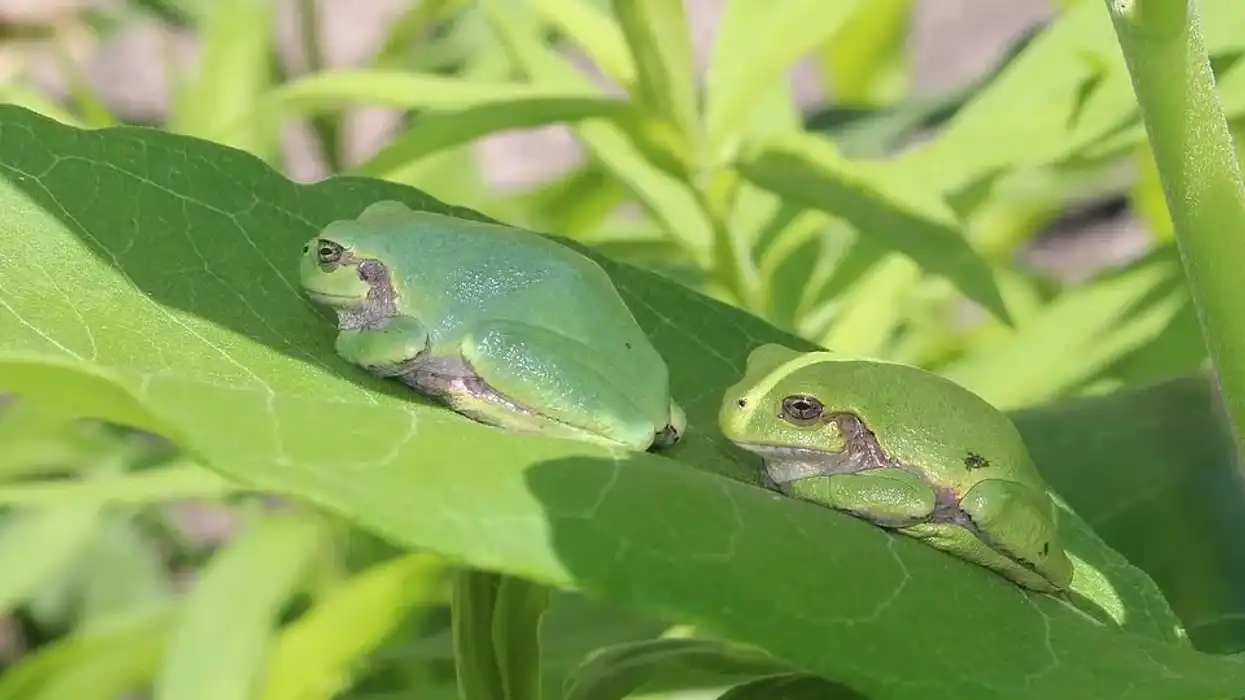If you went to a restaurant in Japan, it is hard to miss the delicious yellowtail sushi on the menu card! Yes, we are talking about the Japanese amberjack fish, popular in Japan as a fish eaten raw or cooked.
It is a species of jackfish in the family Carangidae, native to the northwest Pacific ocean from Korea to Hawaii, and yellowtail, Seriola quinqueradiata.
Called hamachi or buri, it is highly appreciated in Japan as a delicacy in the winter. Famous for the fat content, it is eaten raw and cooked; its meat is a tasty and healthy source of vitamin A and vitamin D, less on Omega-3.
Often Japanese amberjack meat is eaten raw as sashimi. Though it may be listed as a yellowtail tuna, it belongs to the family Carangidae and is not a tuna.
Highly farmed, the small fry or juvenile, called mojako, are picked from seaweed and farmed until they become larger, becoming hamachi or buri.
You can also read about these interesting spiny dogfish facts and catfish facts in our other articles.
Japanese Amberjack Interesting Facts
What type of animal is a Japanese amberjack?
The Japanese amberjack is a marine animal, a species of jackfish belonging to the family Carangidae. The scientific name of this fish is Seriola quinqueradiata. In addition, it is popularly referred to as yellowtail whereas, the yellowtail amberjack is a similar fish with the scientific name Seriola lalandi.
What class of animal does a Japanese amberjack belong to?
The Japanese amberjack is a fish belonging to the class Actinopterygii. It is commonly considered as a tuna, being referred to as yellowtail tuna. But it belongs to an entirely different family, the Carangidae, and not to the family Scombridae that includes tunas, bonitos, mackerels. It belongs to the genus Seriola.
How many Japanese amberjacks are there in the world?
Though the number of Japanese amberjack fish is not known, this species is not endangered. Moreover, it is farmed on a large scale because they are appreciated for their high-quality meat. The large farming numbers are as high as 120000 tons per year.
Where does a Japanese amberjack live?
Seriola quinqueradiata is a saltwater fish living in oceans. Its habitat covers the Northwest Pacific ocean along the coasts of Japan, Korea, Hawaii.
The amberjack seriola is also found along the Atlantic ocean, and the Gulf of Mexico fished on the Florida coast. Juveniles migrate towards north Japan for three to five years until they reach maturity. Then, they move north to south to spawn in summer.
What is a Japanese amberjack's habitat?
Japanese amberjack, a saltwater fish, lives in warm parts of oceans around a depth of 330 ft (100 m). However, they are closer to the coast and move deep inside in summer for spawning (April to June).
Because it is extensively farmed, juveniles or small fry, called mojako, are transferred into the cages in the sea until they grow much bigger. So the majority of them grow in cage habitats. At one point, this fish constituted about 60% of the total farmed marine finfish production in Japan.
Who do Japanese amberjacks live with?
Most amberjack seriola species live in groups called schools. The school size varies for each species. Some species of amberjacks, like the yellowtail, also live solitary lives, depending on their age.
How long does a Japanese amberjack live?
The amberjack species can live up to the age of 17 years. The yellowtail amberjack has a life span of five to six years. The Japanese amberjack, which is cultured, may attract an excellent price at the age of three years when its weight is about 15 - 17 lb (7-8 kg).
How do they reproduce?
The Japanese amberjack, like all other amberjacks, reproduces through spawning. The gametes of the male and female are released into the water, and the fertilization happens externally.
The spawning is during the summer season, April to June. Younger females spawn once, but older females spawn more than once. They go deep into the sea for reproduction, though they usually are closer to the shore.
Each time, the female may release up to 150 eggs, of which about 100 may fertilize. The role of parents after spawning in the upbringing of the young ones is nil.
What is their conservation status?
The conservation status of Japanese amberjack is Least Concern as they are not endangered species.
Japanese Amberjack Fun Facts
What do Japanese amberjacks look like?
The Japanese amberjack is large, has an elongated body, and has no scutes, and is compressed on the lateral line. The pectoral and pelvic fins are of the same length. It has an angular maxillary in the dorso- rear corner.
A yellow stripe runs through the body longitudinally. It has two spines in front of the anal fin. The anal fin is shorter than the dorsal fin, which is weak.
It swims very fast and feeds on smaller fish like sardines, squids, mackerels.
In farming, when the Japanese amberjack reaches a weight of 7 lb (3 kg), it is called hamachi (young). An adult usually allowed to grow to 11 lb (5 kg) is called a buri. The hamachi and buri fish command a reasonable price in the Japanese market.
They are prey to large fish like sharks, yellowfin tuna.

How cute are they?
They are cute, although they are bland-looking in color. The meat of the Japanese amberjack can be pleasant tasting seafood, with olive oil, salt, and pepper; sashimi is a favorite delicacy in winter when eaten raw.
How do they communicate?
The amberjack fish use sound, smell, and other modes to communicate. Not much is documented about this. They communicate to release the gametes at the same time to fertilize. Some fish recognize each other and also humans.
How big is a Japanese amberjack?
The Japanese amberjack is a larger fish, and the hamachi or buri can be compared to a baby in hand. But amberjacks can be very big, going up to 6 ft (1.8 m) and 200 lb (90.7 kg) compared to a large human being.
How fast can a Japanese amberjack move?
The Japanese amberjack move really fast, often in schools.
How much does a Japanese amberjack weigh?
The Japanese amberjack is a large species and has a maximum weight of 80 lb (36 kg). Usually, they weigh about 22 lb (10 kg) in the sea, but they are sold in farmed habitats in Japan when they are much lesser. They feed voraciously.
What are the male and female names of the species?
The male species is called male Japanese amberjack, and the female is referred to as the female Japanese amberjack.
What would you call a baby Japanese amberjack?
The small fry of Japanese amberjack species is called mojako. Then it grows into hamachi and then a buri.
What do they eat?
The Japanese amberjack is known for being predator, and feeding voraciously. The common diet consists of small fish, squid, shrimp, etc. In addition, the younger amberjacks feed on smaller fish like plankton.
Are they poisonous?
The Japanese amberjack is not poisonous but should be eaten after cooking or freezing to kill the worms, if any, inside them.
Would they make a good pet?
No. Japanese amberjacks are not pets.
Did you know...
The yellowtail amberjack is an important sport and commercial fish throughout its range.
Is Japanese amberjack good to eat?
Hamachi and buri are common seafood in Japan, and are appreciated when eaten raw as sashimi in the winter season. However, they are also commonly cooked. In California, some anglers do not consider eating amberjacks good.
Japanese amberjack vs. yellowtail
Yellowtail is a sporting fish, whereas the Japanese amberjack is more appreciated as a delicacy in winter. In addition, the yellowtail species is a medium size fish as compared to the Japanese amberjack.
Here at Kidadl, we have carefully created lots of interesting family-friendly animal facts for everyone to discover! For more relatable content, check out these skate fish facts and swai fish facts pages.
You can even occupy yourself at home by coloring in one of our free printable Japanese amberjack coloring pages.










